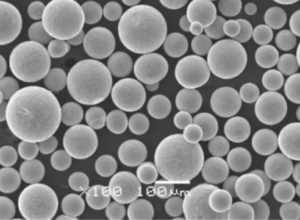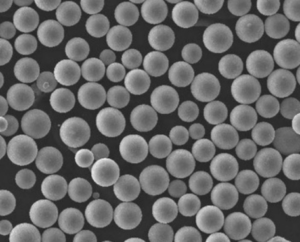Metal Enjeksiyon Kalıplama (MIM) imalat ortamını devrim niteliğinde değiştiriyor. Plastik enjeksiyon kalıplamanın çok yönlülüğünü metalin mukavemeti ve bütünlüğü ile birleştiren MIM, metal parçalar oluşturmada benzersiz hassasiyet ve karmaşıklık sunan son teknoloji bir yöntemdir. İster deneyimli bir mühendis olun, ister modern imalatın inceliklerini merak edin, bu makale MIM dünyasına derinlemesine inerek içgörüler, teknik özellikler ve pratik uygulamalar sunacaktır. Öyleyse, kemerlerinizi bağlayın ve Metal Enjeksiyon Kalıplamanın büyüleyici evrenini keşfetmeye hazır olun!
Metal Enjeksiyon Kalıplamaya (MIM) Genel Bakış
Metal Enjeksiyon Kalıplama (MIM), metal tozlarının faydalarını plastik enjeksiyon kalıplama teknikleriyle birleştiren bir işlemdir. Bu yöntem, geleneksel metal işleme teknikleri kullanılarak oluşturulması zor, hatta imkansız olan karmaşık geometrilere sahip küçük, karmaşık metal parçaların üretilmesini sağlar.
MIM'in Temel Faydaları:
- Tasarımda yüksek hassasiyet ve karmaşıklık
- Verimli seri üretim yetenekleri
- Yüksek hacimler için uygun maliyetli
- Plastik parçalara kıyasla üstün mekanik özellikler
- Çok çeşitli malzemeler kullanılabilir
İşlem Özeti:
- Ham Madde Hazırlama: Metal tozları, bir ham madde oluşturmak için bir termoplastik bağlayıcı ile karıştırılır.
- Kalıplama: Ham madde, istenen şekli oluşturarak bir kalıba enjekte edilir.
- Bağlayıcı Giderme: Bağlayıcı parçadan uzaklaştırılır.
- Sinterleme: Metal parça, metal parçacıklarını birbirine bağlayan ve yoğun, katı bir bileşenle sonuçlanan yüksek bir sıcaklığa ısıtılır.
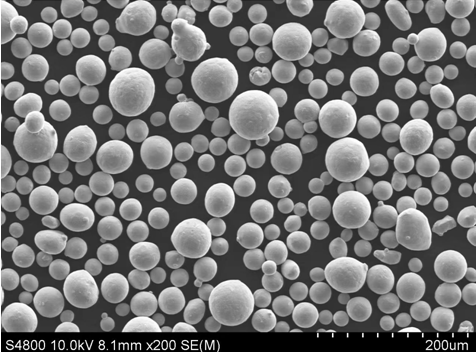
MIM'de Kullanılan Metal Tozlarının Türleri
MIM çok yönlüdür ve çeşitli metal tozu türleri kullanabilir. Aşağıda, açıklamalarıyla birlikte MIM'de yaygın olarak kullanılan on özel metal tozu modeli bulunmaktadır:
| Metal Tozu | Açıklama |
|---|---|
| 316L Paslanmaz Çelik | Mükemmel korozyon direnci ve yüksek çekme mukavemeti ile bilinir. Tıbbi ve gıda işleme uygulamaları için idealdir. |
| 17-4 PH Paslanmaz Çelik | Harika bir mukavemet ve korozyon direnci kombinasyonu sunan, çökelmeyle sertleştirilmiş bir çeliktir. Havacılık ve mekanik bileşenlerde kullanılır. |
| Karbonil Demir Tozu | Yüksek mukavemet ve manyetik özellikler gerektiren parçalar için kullanılan, ince parçacık boyutuna sahip yüksek saflıkta demir. |
| M2 Takım Çeliği | Mükemmel aşınma direnci ve tokluğa sahip yüksek hız çeliği. Genellikle kesici takımlar ve kalıplar için kullanılır. |
| Titanyum Ti-6Al-4V | Hafif, yüksek mukavemetli ve korozyon dirençlidir. Havacılık, tıbbi implantlar ve spor ekipmanlarında tercih edilir. |
| Kobalt-Krom (CoCr) Alaşımı | Diş implantları ve ortopedik cihazlar için uygun, son derece sert ve aşınmaya dayanıklıdır. |
| Inconel 625 | Yüksek sıcaklıklarda yüksek mukavemeti ve oksidasyon ve korozyona karşı direnci ile bilinen nikel bazlı süper alaşım. Havacılık ve kimyasal işlemede kullanılır. |
| Bakır Alaşımı 90/10 | Mükemmel termal ve elektriksel iletkenliği ile bilinir. Elektrik bileşenlerinde ve ısı eşanjörlerinde kullanılır. |
| > IACS | Yüksek sıcaklıklarda özellikle yüksek mukavemet ve korozyon direnci sunan nikel-krom alaşımı. Türbin motorlarında ve nükleer reaktörlerde kullanılır. |
| Alüminyum Alaşım 6061 | İyi mekanik özelliklere ve korozyon direncine sahip hafif. Genellikle otomotiv ve tüketici elektroniğinde kullanılır. |
Metal Enjeksiyon Kalıplamanın (MIM) Bileşimi ve Özellikleri
MIM'de kullanılan malzemelerin bileşimini ve özelliklerini anlamak, uygulamanız için doğru metal tozunu seçmek için çok önemlidir. Aşağıda, bazı popüler MIM malzemelerinin bileşimini, özelliklerini ve karakteristiklerini vurgulayan ayrıntılı bir tablo bulunmaktadır.
MIM Malzemelerinin Bileşimi ve Özellikleri
| Malzeme | Kompozisyon | Mülkler | Özellikler |
|---|---|---|---|
| 316L Paslanmaz Çelik | Fe, Cr, Ni, Mo | Korozyona dayanıklı, yüksek mukavemetli | Manyetik olmayan, biyouyumlu |
| 17-4 PH Paslanmaz Çelik | Fe, Cr, Ni, Cu | Havacılık ve türbinler için ideal | Manyetik, ısıl işlem uygulanabilir |
| Karbonil Demir Tozu | Fe | Yüksek saflık, manyetik özellikler | Yüksek mukavemet, iyi aşınma direnci |
| M2 Takım Çeliği | Fe, C, Mo, W, Cr, V | Yüksek aşınma direnci, tokluk | Yüksek hızlı uygulamalar için uygun |
| Titanyum Ti-6Al-4V | Ti, Al, V | Hafif, yüksek mukavemetli | Biyouyumlu, korozyona dayanıklı |
| Kobalt-Krom (CoCr) Alaşımı | Co, Cr, Mo | Son derece sert, aşınmaya dayanıklı | Biyouyumlu, korozyona dayanıklı |
| Inconel 625 | Ni, Cr, Mo, Nb | Yüksek mukavemetli, oksidasyona dayanıklı | Yüksek sıcaklık uygulamaları için uygundur |
| Bakır Alaşımı 90/10 | Cu, Ni | Mükemmel termal, elektriksel iletkenlik | İyi korozyon direnci |
| > IACS | Ni, Cr, Fe, Nb | Havacılık ve türbinler için ideal | Yüksek sıcaklıklarda mükemmel |
| Alüminyum Alaşım 6061 | Al, Mg, Si | Hafif, iyi mekanik özellikler | İyi korozyon direnci, işlenmesi kolay |
Metal Enjeksiyon Kalıplamanın (MIM) Uygulamaları
MIM, çok yönlülüğü ve yüksek kaliteli, karmaşık parçalar üretme yeteneği nedeniyle çok çeşitli endüstrilerde kullanılmaktadır. İşte MIM'in bazı yaygın uygulamalarına bir bakış:
MIM Malzemelerinin Endüstriyel Uygulamaları
| Endüstri | Uygulama | Kullanılan Malzeme |
|---|---|---|
| Tıbbi | Cerrahi aletler, diş implantları, ortopedik cihazlar | 316L Paslanmaz Çelik, CoCr Alaşımı, Ti-6Al-4V |
| Havacılık ve Uzay | Türbin kanatları, bağlantı elemanları, yapısal bileşenler | Inconel 625, Titanyum Ti-6Al-4V, 17-4 PH Paslanmaz Çelik |
| Otomotiv | Yakıt enjektörleri, turboşarjlar, şanzıman parçaları | M2 Takım Çeliği, 17-4 PH Paslanmaz Çelik, Alüminyum Alaşımı 6061 |
| Tüketici Elektroniği | Konnektörler, muhafazalar, ısı emiciler | Bakır Alaşımı 90/10, Alüminyum Alaşımı 6061 |
| Savunma | Ateşli silah bileşenleri, taktik teçhizat | Karbonil Demir Tozu, 17-4 PH Paslanmaz Çelik, M2 Takım Çeliği |
| Endüstriyel Makineler | Kesici takımlar, kalıplar, dişliler | M2 Takım Çeliği, 17-4 PH Paslanmaz Çelik, Karbonil Demir Tozu |
| Enerji | Nükleer reaktör parçaları, petrol ve gaz bileşenleri | Nikel 718, Inconel 625, 17-4 PH Paslanmaz Çelik |
| Takı | Saat kasaları, tokalar, dekoratif eşyalar | 316L Paslanmaz Çelik, Titanyum Ti-6Al-4V |

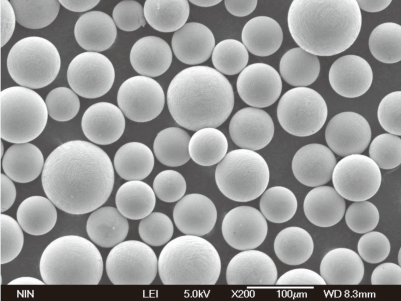
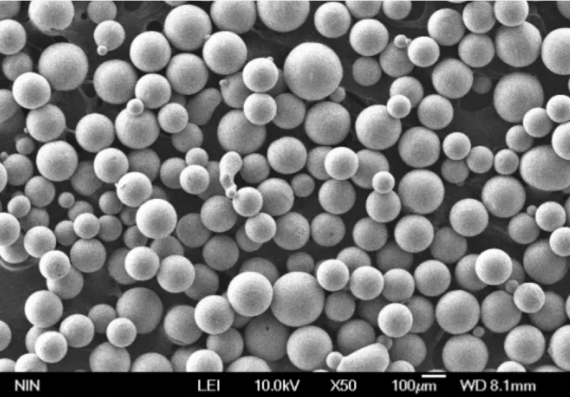
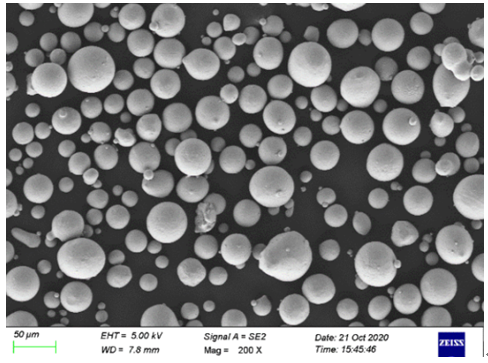
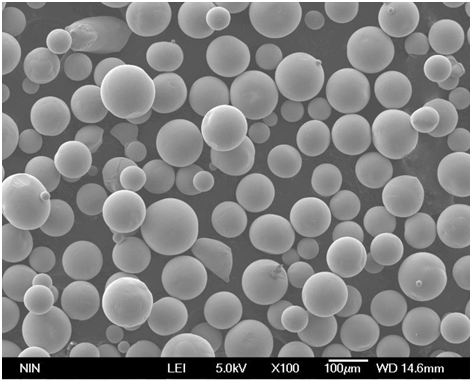
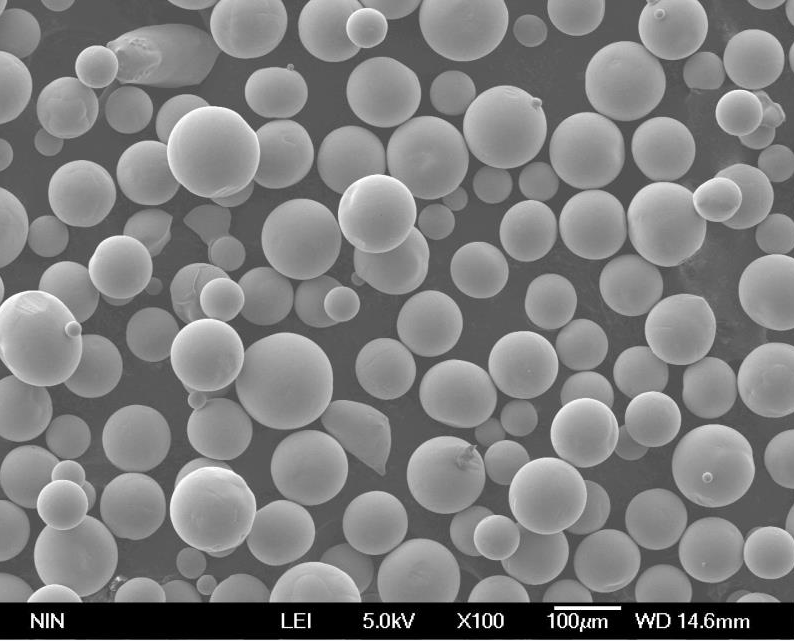
MIM'de Spesifikasyonlar, Boyutlar, Kaliteler ve Standartlar
MIM söz konusu olduğunda, özellikler, boyutlar, kaliteler ve standartlar, her uygulama için doğru uyumu ve performansı sağlamak açısından kritik öneme sahiptir. İşte bazı yaygın MIM malzemeleri için bu yönlere ayrıntılı bir bakış.
MIM Malzemeleri için Özellikler ve Standartlar
| Malzeme | Teknik Özellikler | Boyutlar | Notlar | Standartlar |
|---|---|---|---|---|
| 316L Paslanmaz Çelik | ASTM A276, ISO 5832-1 | 0,1 mm ila 100 mm | Denizcilik sınıfı | ASTM F138 |
| 17-4 PH Paslanmaz Çelik | ASTM A564 | 0,1 mm ila 100 mm | H900, H1025 | AMS 5643 |
| Karbonil Demir Tozu | ASTM A131 | 0,1 mm - 50 mm | N/A | ASTM A848 |
| M2 Takım Çeliği | ASTM A600 | 0,1 mm - 50 mm | T1, T2, T4 | ISO 4957 |
| Titanyum Ti-6Al-4V | ASTM B348 | 0,1 mm ila 100 mm | 5. Sınıf | ASTM F136 |
| Kobalt-Krom (CoCr) Alaşımı | ASTM F75 | 0,1 mm - 50 mm | N/A | ISO 5832-4 |
| Inconel 625 | ASTM B443 | 0,1 mm - 50 mm | N/A | AMS 5666 |
| Bakır Alaşımı 90/10 | ASTM B111 | 0,1 mm ila 100 mm | C70600 | ASME SB111 |
| > IACS | ASTM B670 | 0,1 mm - 50 mm | N/A | AMS 5662 |
| Alüminyum Alaşım 6061 | ASTM B221 | 0,1 mm ila 200 mm | T6, T651 | AMS 4150 |
MIM Malzemelerinin Tedarikçileri ve Fiyatlandırma Detayları
Doğru tedarikçiyi bulmak ve maliyet etkilerini anlamak, herhangi bir üretim süreci için hayati öneme sahiptir. Aşağıda, bazı saygın tedarikçileri ve popüler MIM malzemeleri için gösterge niteliğindeki fiyatlandırmayı listeleyen bir tablo bulunmaktadır.
MIM Malzemeleri için Tedarikçiler ve Fiyatlandırma
| Malzeme | Tedarikçi | Fiyat Aralığı (kg başına) | Notlar |
|---|---|---|---|
| 316L Paslanmaz Çelik | Carpenter Technology, Sandvik | $20 – $30 | Miktar ve saflığa göre değişir |
| 17-4 PH Paslanmaz Çelik | Allegheny Technologies, Precision Castparts Corp. | $25 – $35 | Fiyatlar ısıl işlem koşuluna göre değişir |
| Karbonil Demir Tozu | BASF, Höganäs AB | $15 – $25 | Parçacık boyutu ve saflığa bağlıdır |
| M2 Takım Çeliği | Bohler-Uddeholm, Hitachi Metals | $30 – $45 | Fiyatlar alaşım elementlerine göre dalgalanır |
| Titanyum Ti-6Al-4V | VSMPO-AVISMA, ATI Metals | $50 – $70 | Fiyat, form ve kaliteye göre değişir |
| Kobalt-Krom (CoCr) Alaşımı | Arcam AB, Carpenter Technology | $80 – $100 | Tıbbi ve havacılık alanında yüksek talep |
| Inconel 625 | Special Metals, Haynes International | $40 – $60 | Maliyet, forma (toz, çubuk vb.) bağlıdır |
| Bakır Alaşımı 90/10 | Wieland Group, Mueller Industries | $10 – $20 | Fiyatlar bakır piyasasına göre değişebilir |
| > IACS | ATI Metals, VDM Metals | $50 – $70 | Fiyat, nikel içeriğinden etkilenir |
| Alüminyum Alaşım 6061 | Kaiser Aluminum, Hydro Extrusions | $5 – $10 | Yaygın olarak kullanılır, dolayısıyla rekabetçi fiyatlandırma |
Metal Enjeksiyon Kalıplama (MIM) Avantajları ve Dezavantajlarının Karşılaştırılması
Her üretim sürecinin avantajları ve sınırlamaları vardır. MIM'in avantajlarını ve dezavantajlarını inceleyelim, böylece nerede parladığını ve nerede yetersiz kalabileceğini anlayabilirsiniz.
MIM'in Avantajları ve Sınırlamaları
| Aspect | Avantajlar | Sınırlamalar |
|---|---|---|
| Tasarım Esnekliği | Karmaşık şekiller üretebilir | Parça boyutu ve ağırlığı ile sınırlıdır |
| Malzeme Çeşitliliği | Geniş metal yelpazesi | Bazı malzemeler pahalıdır |
| Hassasiyet ve Tolerans | Yüksek hassasiyet elde edilebilir | Süreç parametrelerinin hassas kontrolünü gerektirir |
| Üretim Hacmi | Yüksek hacimler için uygun maliyetli | Düşük miktarlar için ekonomik değildir |
| Mekanik Özellikler | Mükemmel mekanik özellikler | Özellikler, malzeme ve süreç kontrolüne bağlıdır |
| Yüzey İşlemi | Pürüzsüz yüzey elde edilebilir | Çok ince yüzeyler için son işlem gerekebilir |
| Çevresel Etki | Verimli malzeme kullanımı, daha az atık | Enerji yoğun bir süreç, özellikle sinterlemede |

SSS
| Soru | Cevap |
|---|---|
| Metal Enjeksiyon Kalıplama (MIM) Nedir? | MIM, karmaşık metal parçalar oluşturmak için metal tozlarını plastik enjeksiyon kalıplama teknikleriyle birleştiren bir üretim sürecidir. |
| MIM'in başlıca faydaları nelerdir? | MIM, yüksek hassasiyet, karmaşık tasarımlar, büyük hacimler için uygun maliyet ve üstün mekanik özellikler sunar. |
| En çok hangi endüstriler MIM kullanır? | MIM, tıbbi, havacılık, otomotiv, tüketici elektroniği, savunma, endüstriyel makineler, enerji ve mücevherat endüstrilerinde yaygın olarak kullanılmaktadır. |
| MIM'de hangi malzemeler kullanılabilir? | Paslanmaz çelikler, takım çelikleri, titanyum, nikel alaşımları, kobalt-krom ve daha fazlası dahil olmak üzere çok çeşitli malzemeler MIM'de kullanılabilir. |
| MIM, geleneksel metal işleme ile nasıl karşılaştırılır? | MIM, birçok geleneksel yönteme göre daha karmaşık tasarımlara ve daha yüksek hassasiyete olanak tanır. Ancak, düşük hacimli üretim için daha maliyetli olabilir. |
| MIM'in sınırlamaları nelerdir? | MIM, parça boyutu ve ağırlığı, malzeme maliyeti ile sınırlıdır ve hassas süreç kontrolü gerektirir. |
| MIM çevre dostu mudur? | MIM, daha az atıkla malzemeleri verimli bir şekilde kullanır, ancak süreç, özellikle sinterleme, enerji yoğun olabilir. |
Sonuç
Metal Enjeksiyon Kalıplama (MIM) modern üretimde dönüştürücü bir teknoloji olarak öne çıkıyor ve karmaşık, yüksek hassasiyetli metal parçalar oluşturmada benzersiz avantajlar sunuyor. MIM'in malzemelerini, sürecini, uygulamalarını ve sınırlamalarını anlayarak, üreticiler operasyonlarında inovasyonu ve verimliliği artıran bilinçli kararlar verebilirler. İster tıbbi implantlar, ister havacılık bileşenleri veya karmaşık endüstriyel aletler üretmek istiyor olun, MIM çok yönlü ve etkili bir çözüm sunar. Öyleyse, MIM dünyasına dalın ve bu teknolojinin üretim yeteneklerinizi yeni zirvelere nasıl taşıyabileceğini keşfedin.
